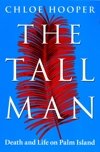The tall man by Chloe Hooper

Hamish Hamilton, 2008 ISBN 9780241
015407 276p Hbk
(Age: Senior Secondary/adult) Beyond the political rhetoric of
intervention and dysfunctional Aboriginal communities, The Tall Man
focuses on what happened in one community, Palm Island, off the
Queensland coast, in 2004. There, despite the findings and
recommendations of the Black Deaths in Custody Inquiry of 1990, an
Aboriginal man, Cameron Doomadgee, died in the cells on the island,
after being arrested for swearing at Senior Sergeant Chris Hurley, a
decorated and experienced Police Officer who stands 200cm tall. Chloe
Hooper a journalist, had never heard of Palm Island, but asked by the
counselor representing the Aboriginal community, Andrew Boe, to cover
the proceedings of the inquest and write a few articles for the daily
press, she accompanied him to the inquest.
The few articles which would take only days expanded into a book: one
which retells the story of Cameron's arrest and death and its enormous
and far reaching consequences, with the tension of a well written crime
novel, a page turner, but all the more breathtaking because it is true.
Hooper gives a potted history of the Aboriginal residents of Palm
Island, brought to live in dormitories, taken from their families,
marrying and having children, continuing to live on the island, the
only home they know. The end of the missionaries saw alcohol and the
abuse of that substance led to 7 police permanently stationed there. In
this paradise, there seemed to be an ever-present and increasing line
dividing the black and white residents. But it is not only the
black culture that Hooper explores, she also includes the Queensland
police culture, with its investigations and commissions. That police
force has been under a microscope for some years, and this death in
2004, refocused media attention on its operations yet again.
The inquest was adjourned twice, keeping everyone in limbo until it
resumed. In the intervening years, Cameron's son, Eric, hanged himself,
and the community became even sadder and more tense. The description of
the trial and verdict is numbing, as Hurley is pictured by the police
and some media as a victim. The postscript that he is now trying to
have his name removed from any responsibility in Cameron's death is
telling of the power of the police in Queensland.
For students looking at Aboriginal Studies or Australian History, for
those wanting a book about justice and injustice, or relations between
black and white, or just an involving read, then this book fits the
criteria. Foremost a story of a shocking event in our recent past, The
Tall Man impels us all to look more closely at what is happening in
minority communities.
Fran Knight